Earthquakes -> properties of surfaces
Properties of Surfaces
Surfaces exhibit a variety of properties that are important in understanding their behavior and interactions with other substances. These properties include roughness, adhesion, absorption, and reflection.
Roughness
The roughness of a surface refers to the irregularities and unevenness present on its outer layer. This property can affect the way a surface interacts with other materials, such as how easily particles can adhere to it or how light is reflected off of it. Surfaces with greater roughness tend to have more area available for interactions, which can influence their behavior in various processes, such as friction and adhesion.
Adhesion
Adhesion is the ability of a surface to stick to another material. The surface properties, such as roughness and chemical composition, play a crucial role in determining the strength of adhesion. For instance, a rough surface may provide more contact points for adhesion, while a smooth surface may have less. Understanding adhesion is important in fields such as material science, engineering, and biology.
Absorption
The absorption of a surface refers to its ability to take in and retain substances that come into contact with it. This property is particularly important in the context of porous surfaces, such as sponges or fabrics, which can absorb liquids and gases. The ability of a surface to absorb substances can be influenced by factors such as its porosity, surface area, and chemical composition.
Reflection
Reflection is the property of a surface to bounce back light, sound, or other forms of energy. The reflective properties of a surface are influenced by its smoothness, angle, and the material it is made of. Understanding how surfaces reflect light is important in fields such as optics, architecture, and photography.
Study Guide
- Define roughness and explain how it influences the behavior of surfaces.
- Discuss the role of surface properties in adhesion and provide examples of how different surfaces exhibit varying degrees of adhesion.
- Explain the concept of absorption and discuss how surface porosity and chemical composition can impact the absorption of substances.
- Describe the factors that influence the reflective properties of surfaces and discuss the importance of understanding reflection in various fields.
- Compare and contrast the properties of smooth and rough surfaces, providing real-world examples to illustrate your points.
Understanding the properties of surfaces is crucial in various scientific and technological applications. By studying these properties, we can gain insights into how surfaces interact with their surroundings and develop new materials and technologies to enhance these interactions.
.◂Science Worksheets and Study Guides Seventh Grade. Earthquakes

 Activity Lesson
Activity Lesson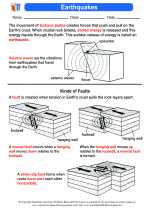
 Worksheet/Answer key
Worksheet/Answer key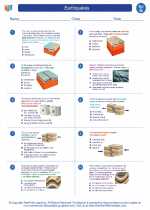
 Worksheet/Answer key
Worksheet/Answer key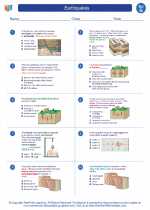
 Worksheet/Answer key
Worksheet/Answer key
 Worksheet/Answer key
Worksheet/Answer key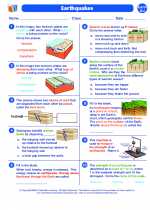
 Worksheet/Answer key
Worksheet/Answer key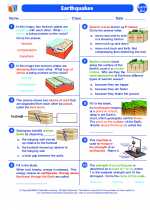
 Vocabulary/Answer key
Vocabulary/Answer key
 Vocabulary/Answer key
Vocabulary/Answer key
 Vocabulary/Answer key
Vocabulary/Answer key
 Vocabulary/Answer key
Vocabulary/Answer key
 Vocabulary/Answer key
Vocabulary/Answer key
 Vocabulary/Answer key
Vocabulary/Answer key
 Vocabulary/Answer key
Vocabulary/Answer key
